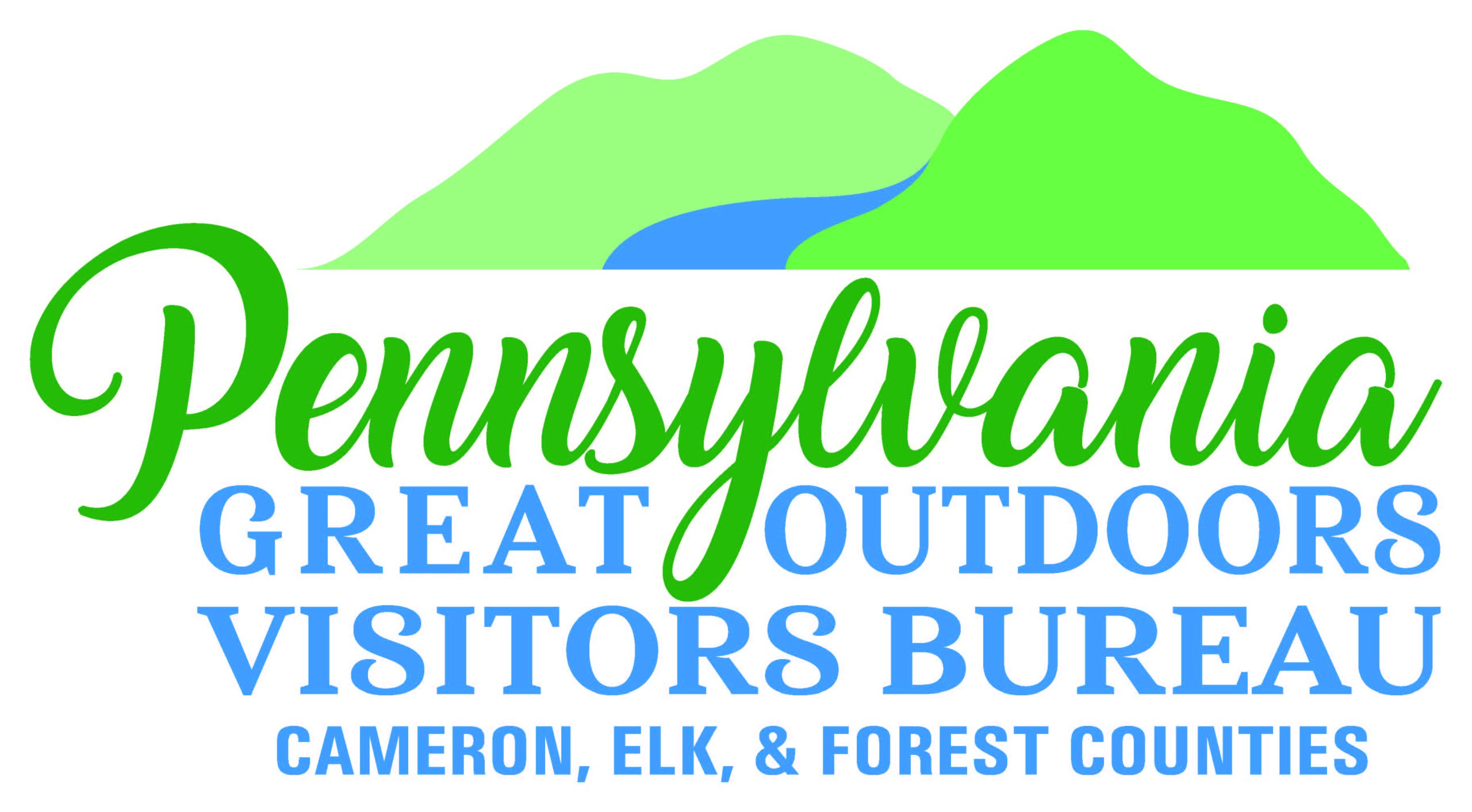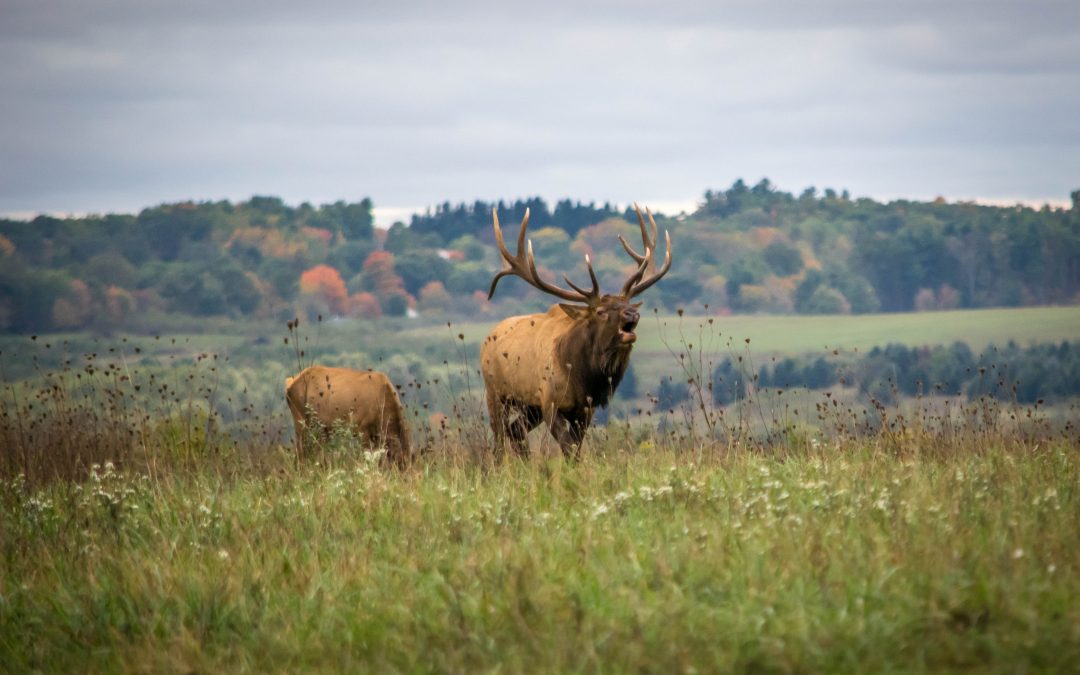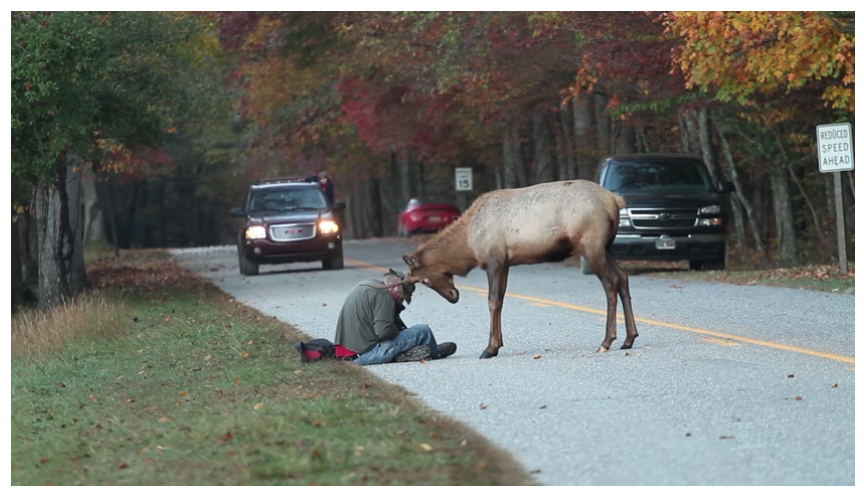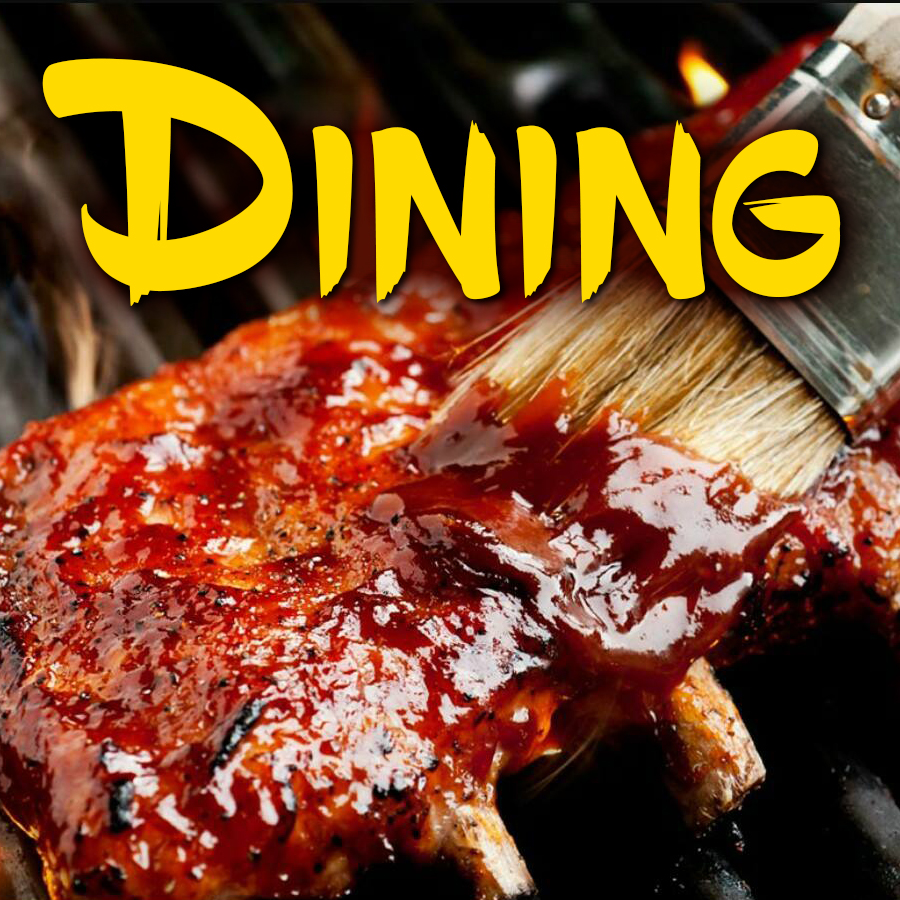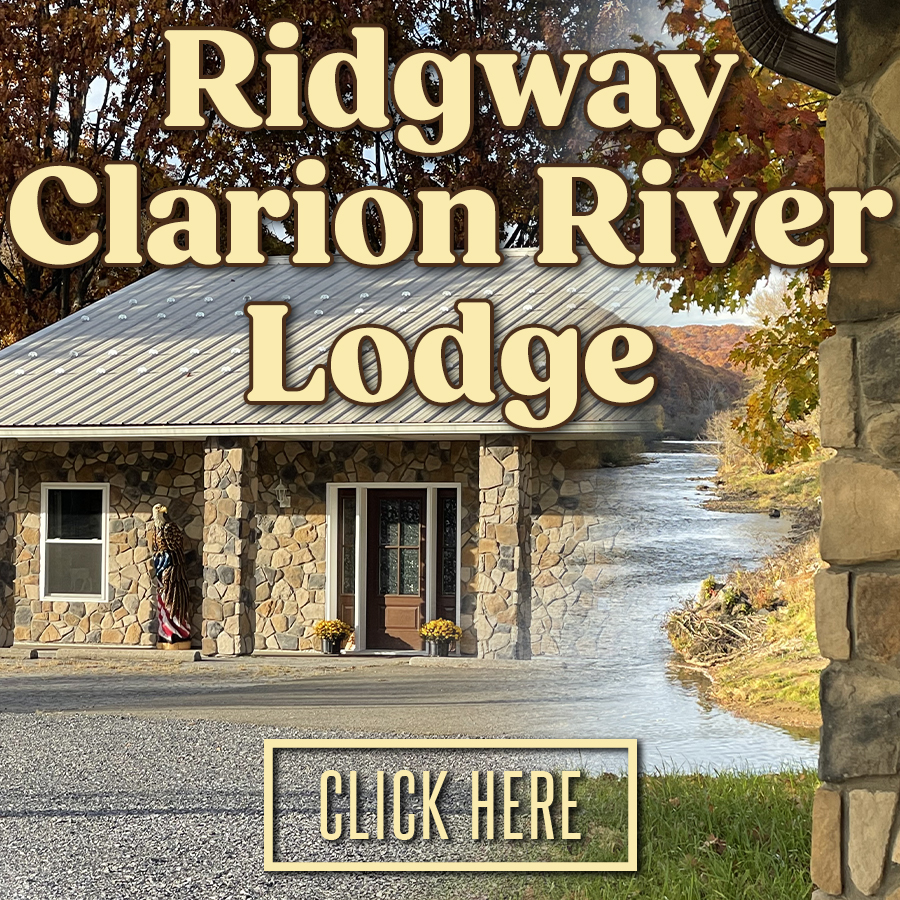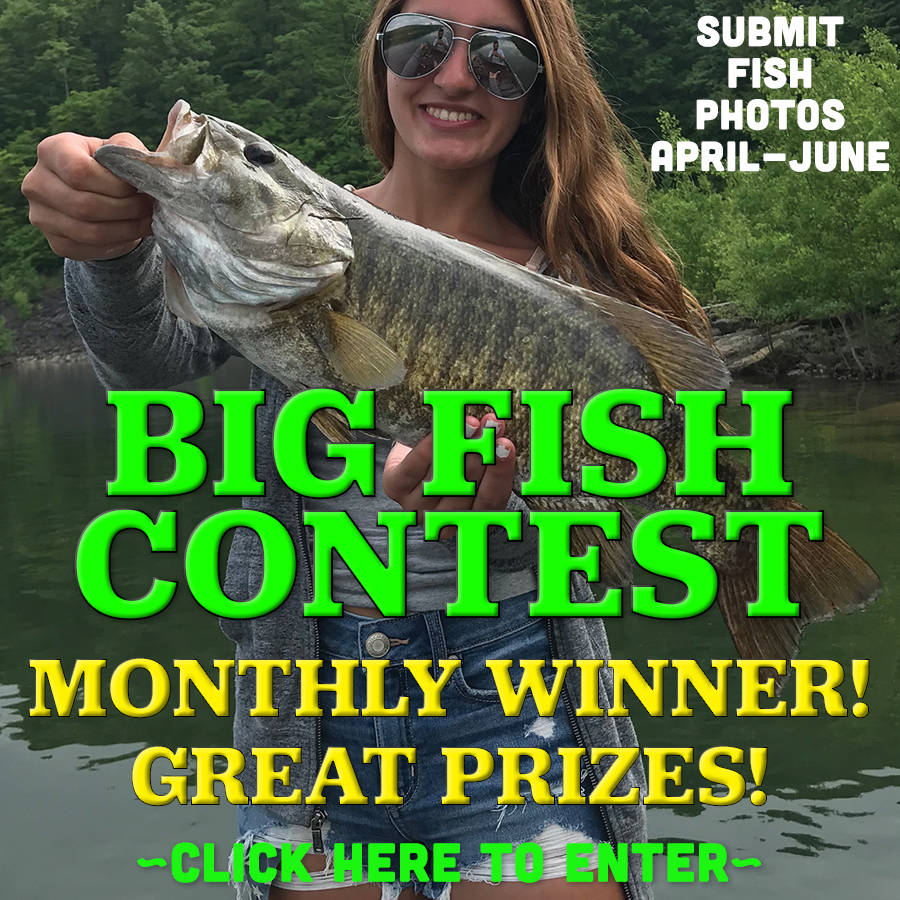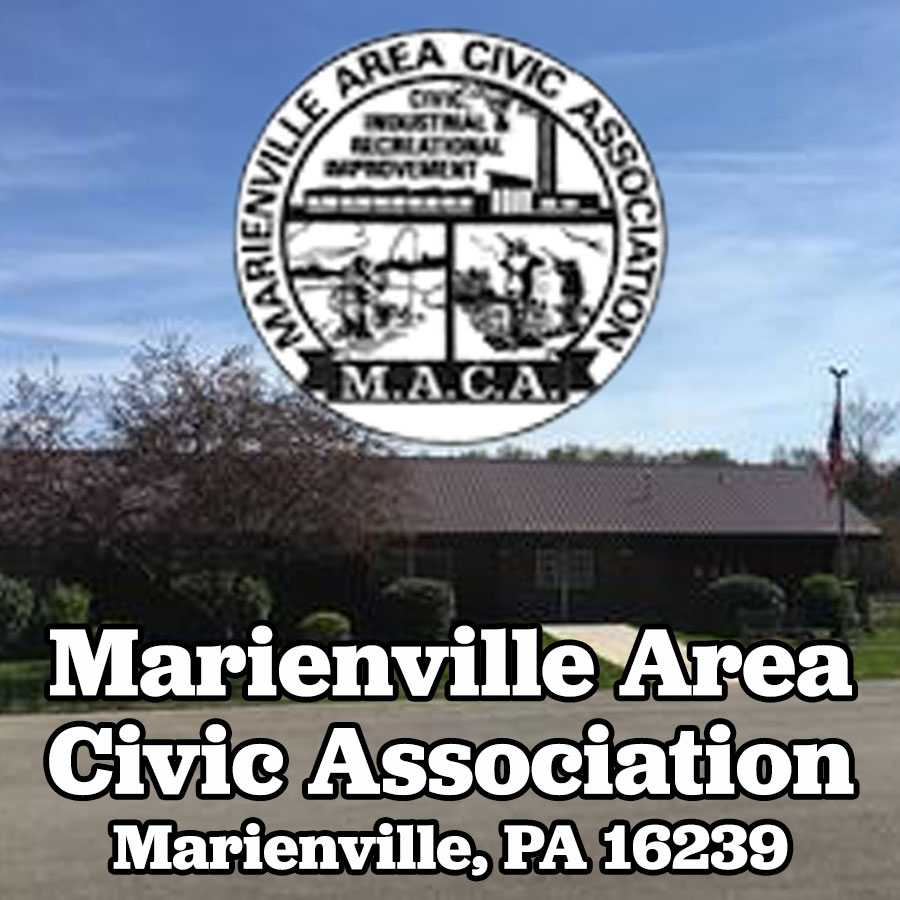Written by Danielle Taylor | Header photo by Tina Blackwell
Each year, thousands of people travel to the Pennsylvania Great Outdoors region to spend time in nature, and for many, the major attraction is the wide range of wildlife found here. In urban areas, pigeons and squirrels are often the only wild animals you might see, but with the huge swaths of protected forests and rivers here, you’re likely to come across bears, river otters, porcupines, eagles, whitetail deer, turkeys, and of course magnificent elk. As much as you may want to set out some food to draw them in or help them out, feeding elk and bear is against Pennsylvania state law, as it creates huge problems that severely damage the animals as well as their habitats. Recently, the Pennsylvania Great Outdoors Visitors Bureau partnered with the Pennsylvania Game Commission (PGC), Department of Conservation and Natural Resources (DCNR), and Keystone Elk Country Alliance (KECA) on a “Don’t Feed Elk and Bear!” campaign to protect our greatest natural assets and ensure visitors can enjoy them for centuries to come.
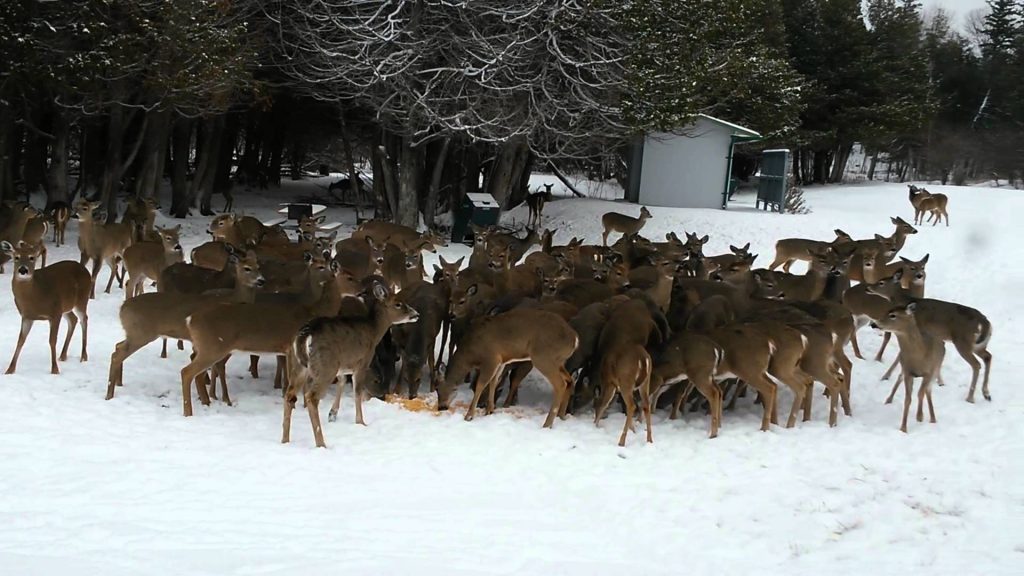
Most wild animals naturally give each other space, but the attraction of food brings them together unnaturally, causing an increase in the transmission of disease. Photo courtesy of the Pennsylvania Game Commission.
“Artificial feeding unnaturally congregates animals into close proximity, creating an environment that is ripe for disease to move from individual to individual,” says Jeremy Banfield, PGC elk management wildlife biologist. “Wildlife can’t quarantine themselves. With newly emerging diseases such as Chronic Wasting Disease in deer and eventually elk and mange in bears, we as the management agencies and the public have a shared responsibility to do everything we can to mitigate disease transmission.”
Aside from communicable diseases, artificial feeding induces noncontagious illnesses as well. Every year, multiple elk and deer in Pennsylvania are found dead from rumen acidosis, a dangerous condition directly caused by eating too much highly fermentable grain, primarily corn placed by individuals unaware of its fatal effects.
Additionally, setting out food for wildlife encourages them to associate food with people, which creates a number of safety issues. Banfield notes, “Artificial feeding positively reinforces wildlife to become accustomed to people and/or human-dominated areas (residential areas, roadways, etc.). As a result, a fed animal will lose its instinctual fear of people and become habituated. Habituated animals pose a safety risk to people directly from potential attacks, or indirectly through vehicle collisions.”
In 2013, a young bull elk in Great Smoky Mountains National Park was caught on video repeatedly and aggressively head-butting a photographer who had been shooting from an appropriate distance. This sort of behavior comes directly from becoming too comfortable with humans, and park officials had to put the animal down out of concern for public safety. Unfortunately, the same thing has happened in Pennsylvania. “On two occasions now, we’ve euthanized elk with overtly aggressive behavior toward people,” Banfield says.
Although many people believe that they’re helping hungry animals by feeding them or setting out other attractants like salt licks, Banfield notes that the opposite is true.
“Pennsylvania’s wildlife are perfectly adapted to their environment,” he expresses. “They evolved here. The notion that they need ‘help’ in the form of artificial feeding is misguided at best and clearly detrimental to animal welfare at worst. I would implore people to consider their motivation for feeding and try to comprehend the large-scale effects of their actions.”
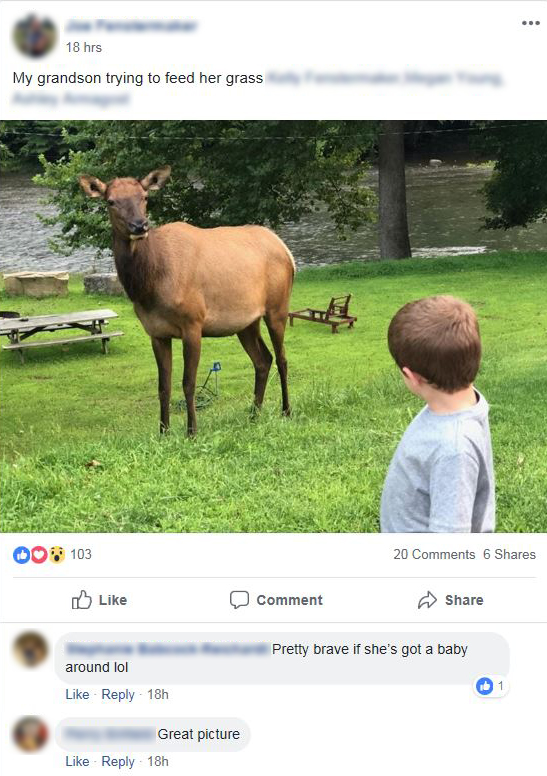 PGC does maintain some herbaceous grasslands informally known as “food plots” on state game lands and DCNR Bureau of Forestry properties throughout Elk Country; however, several important distinctions separate these from unauthorized feed sites created by the public.
PGC does maintain some herbaceous grasslands informally known as “food plots” on state game lands and DCNR Bureau of Forestry properties throughout Elk Country; however, several important distinctions separate these from unauthorized feed sites created by the public.
“There is a huge difference between a feeder or feed site that occupies a very small area (typically a 10-foot radius, maybe) and a 10-acre or larger grassland,” Banfield says. “Grasslands or herbaceous habitat are natural features of the environment. Our management of them prevents natural succession from shifting those habitats away from grasslands to something like a shrub community or a young forest. In addition to grassland habitats being a natural part of the landscape and their size, we could also add they are seasonally utilized by elk, deer, and other wildlife and do not provide a constant source of forage the way many feeders/feed sites do. Herbaceous habitats do not congregate animals unnaturally, the way a feeder does (literally nose-to-nose contact).”
People who wish to increase their chances of seeing elk or other wildlife in their natural habitat do have ethical options, however.
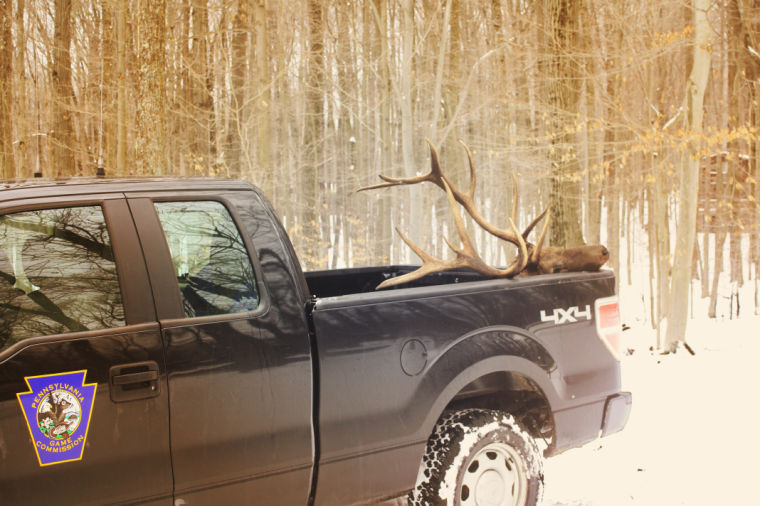
A necropsy on this elk, found dead in early 2014, clearly indicated it had died as a result of unauthorized feeding by the public. Photo courtesy of the Pennsylvania Game Commission.
In 2012, a PGC-issued press release included the following statement from Dr. Walter Cottrell, then a Pennsylvania Game Commission wildlife veterinarian:
“For those who truly enjoy seeing elk, it is best for them to stop artificially feeding elk and other wildlife. It would be far more beneficial if they were to implement some form of habitat-improvement-producing cover to reduce weather-related stress or food in the form of digestible native plants on their property.”
Mike Steingraber, a PGC wildlife conservation officer, notes that education, practice, and patience are key to humane wildlife viewing success. “Challenge yourself to learn more about the wildlife you are trying to view,” he advocates. “Like anything else, the more time you spend practicing, the better you will get at it. Knowing the area of the Commonwealth that the wildlife lives in, the type of habitat the animal likes, and the type of food it prefers is a great place to start.”
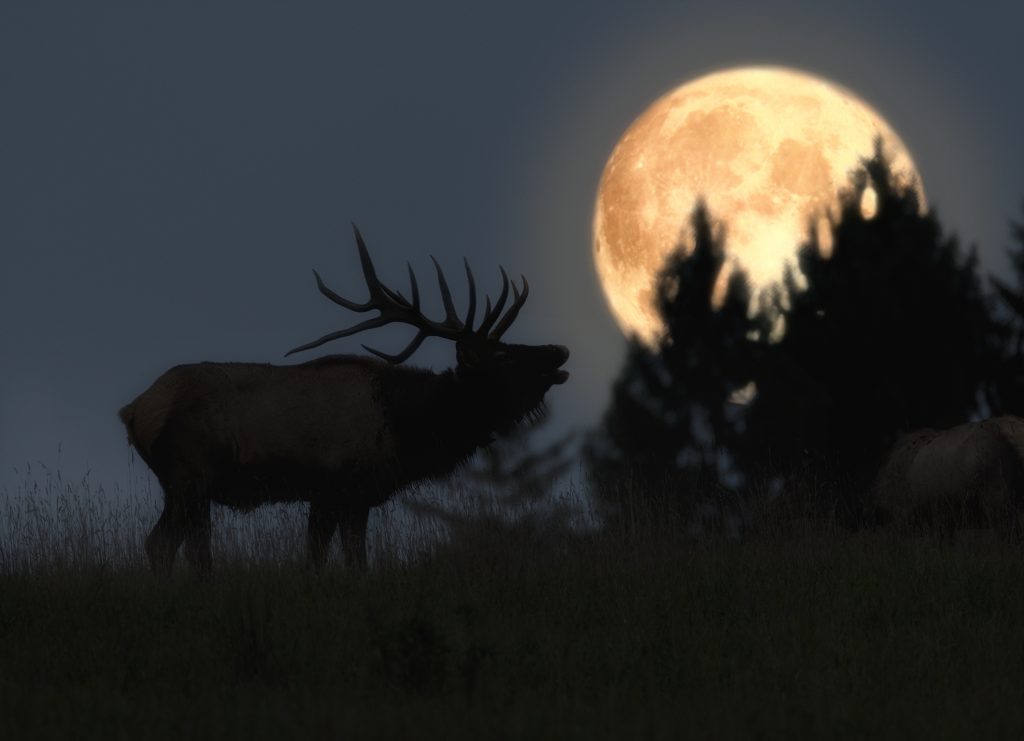
Seeing elk in the wild is an unforgettable experience, and by observing from a distance, you can do your part to keep their wild nature intact. Photo by Jeffery R. Orzechowski.
On the whole, Banfield encourages people to keep in mind the realities of nature in regard to any interaction with wildlife.
“Wild animals are by their very definition, wild,” he stresses. “What makes them wild is their independence from us. Choosing to unnaturally draw wildlife into an area so they can be viewed or anthropomorphized degrades that independence and their wild nature. To me, artificial feeding selfishly and needlessly stains the very thing that attracts us to wildlife: their pure and unfettered ‘wildness.’”
Learn more about Elk Country and other interesting places to visit in the Pennsylvania Great Outdoors region by going to VisitPAGO.com or calling (814) 849-5197.
